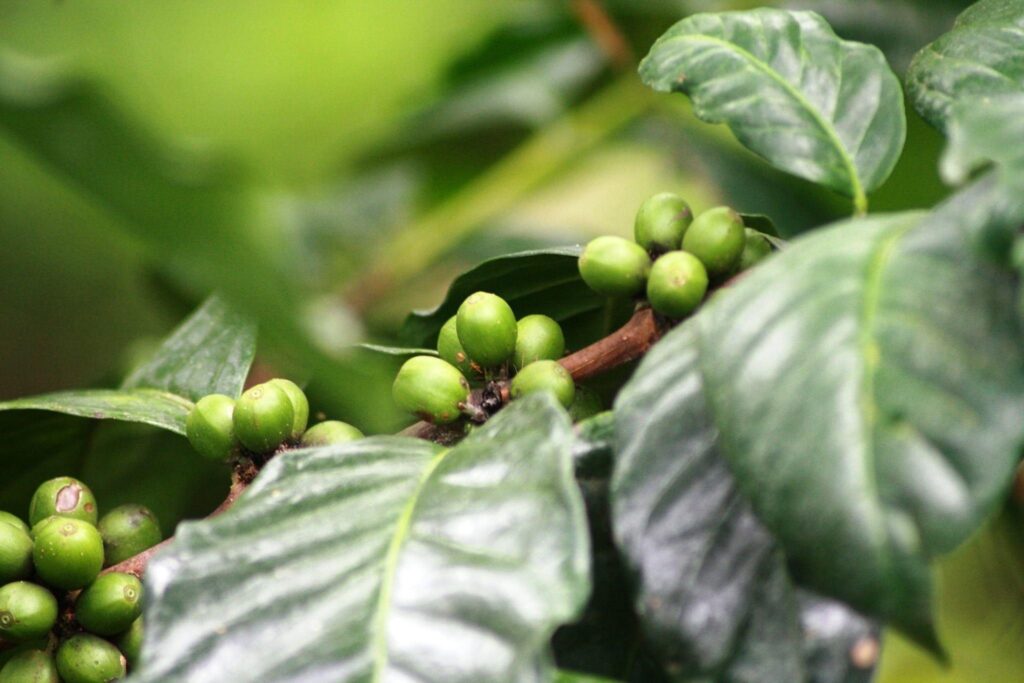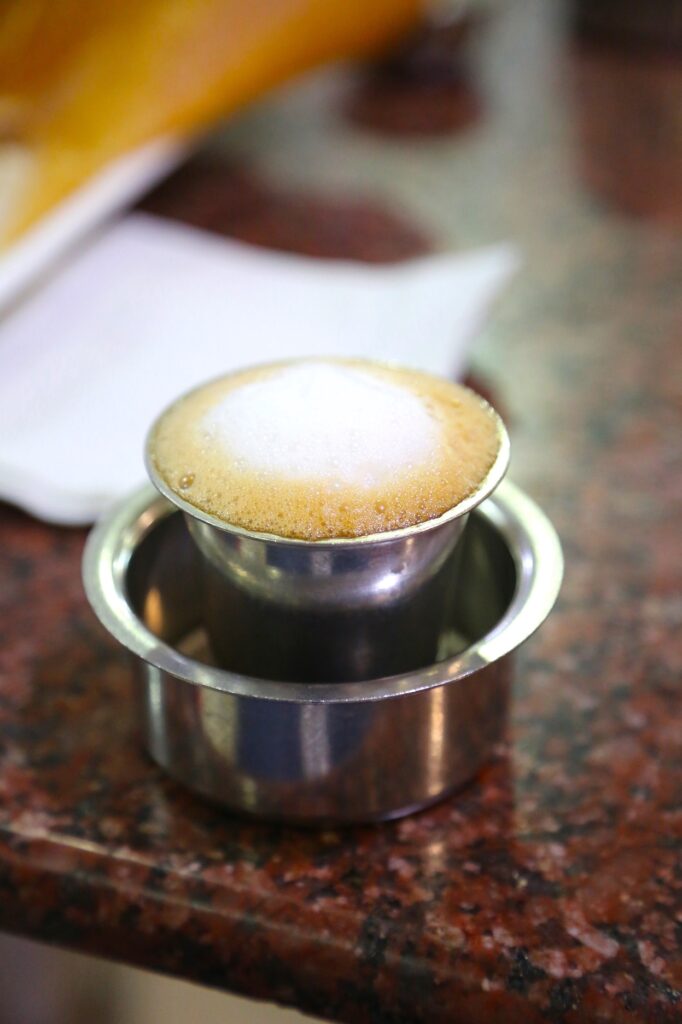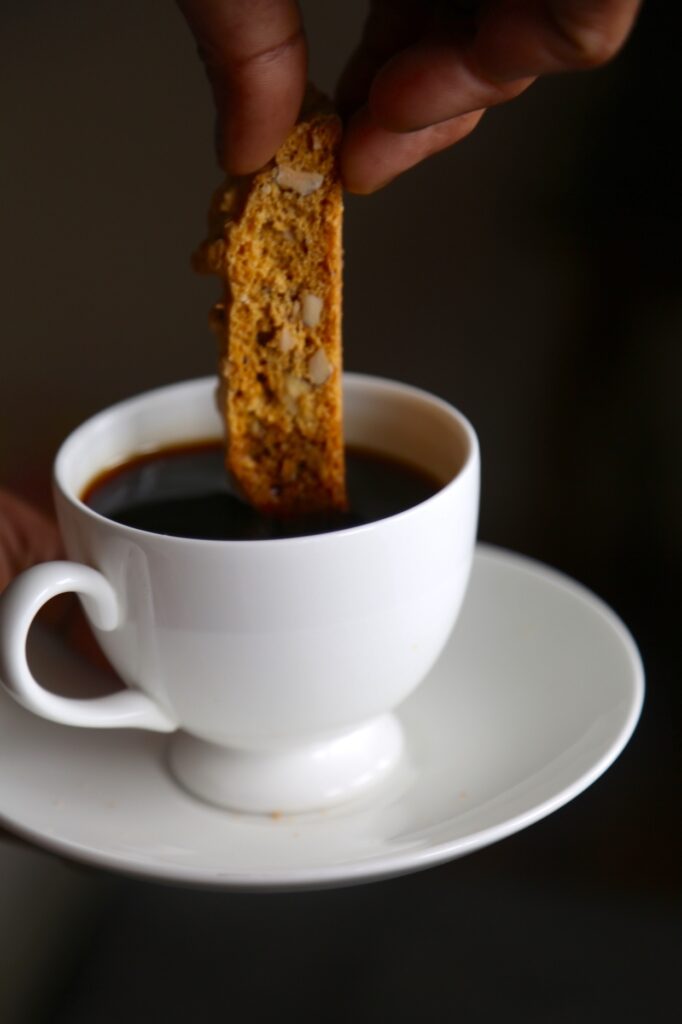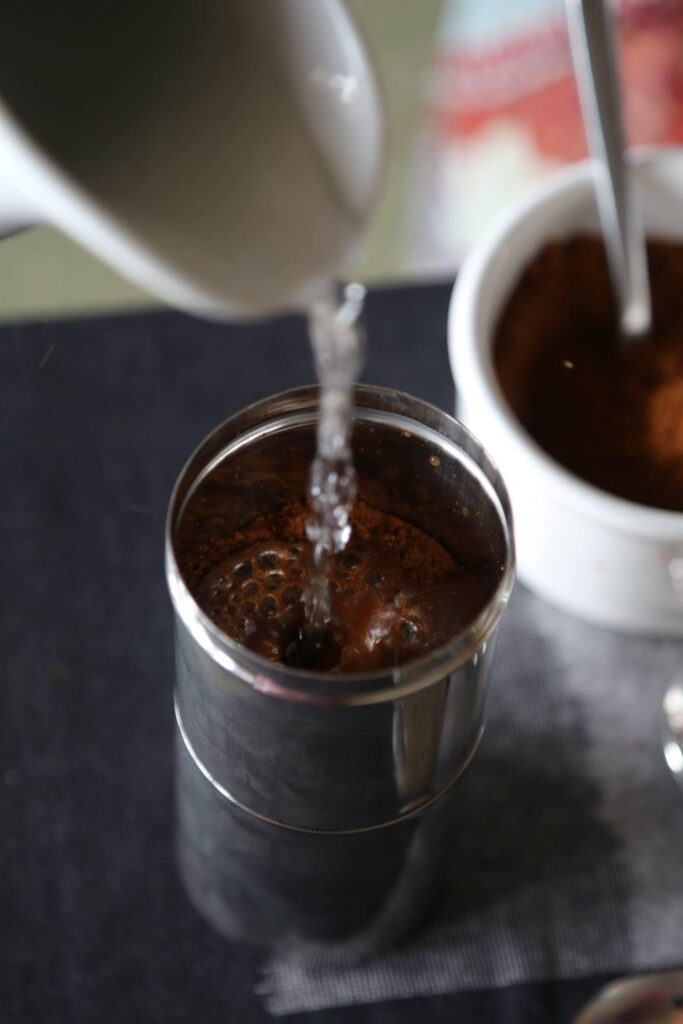It was still raining here in Mumbai a few days ago and a slow, rainy day makes me crave a strong cup of piping hot coffee. Then a school friend recommended an Indian coffee I hadn’t tasted so I thought I’d do some brewing, the slow old- fashioned way. India is now growing some very good coffees. While the quality of the bean and roast is paramount experimenting with brewing methods brings more quality to your cup.
I dusted the cobwebs off my Samovar-like coffee maker originally patented by the American manufacturers Landers, Frary and Clark in 1898 and dated 1904. Incidentally Landers, Frary and Clark innovated three important products in the 1800’s- the stovetop coffee percolator, food chopper and bread machine.
I rummaged this quirky coffee urn, now fairly rare at a garage sale 10 years ago, while driving up to Amherst from Boston. It had a dodgy tap so it was cheap -10 bucks.

I took it to Lohar Chawl in Mumbai where a working washer was installed and it was as good as new.
When I think of the many modern espresso and coffee percolators I have changed just in the last 4 years I can’t help but marvel at how this 120-year-old machine still brews perfectly.
The oldest method for brewing coffee in the 1700’s was by boiling powdered beans with hot water. Coffee in the land of its origin Africa and the Middle East is still prepared this way- Turkish, Arab and Ethiopians boil coffee and serve it with the dregs.
This was followed by the drip method where the coffee was passed through a cloth. Unfortunately the coffee tasted of cloth.

My coffee urn uses a method discovered a century later called ‘pumping percolation’. This coffee maker has only two compartments; the cistern at the bottom that contains water and the compartment above that holds the coffee grounds.
When heat is applied to the water below, it bubbles up through the coffee and then seeps back into the water chamber below through the funnel. This is why it’s a slow process because all the water has to rise up and then bubble down until the coffee is ready. It takes about 45-55 minutes. The longer you brew the stronger the coffee.

The French further improved the pumping method by creating a vacuum in the base water chamber. This forces the coffee brewing above the coffee grounds back into the cold water below even more slowly but results in a clearer brew.
The vacuum coffee makers were popular among aficionados but were eventually replaced by the efficiency of stovetop percolators.
I fill the gaslight with fuel and adjust it for a medium flame under my little dinosaur. The coffee as expected takes its time. It doesn’t cough or splutter or steam. Incidentally, I used a fabulous Indian coffee called Monsooned Malabar.
This coffee was being grown and shipped from the Malabar coast by the Dutch East India fleet in the 1700’s. The Dutch were the first to cultivate coffee on a large scale mainly in Java and Ceylon.

The damp conditions that prevailed during a long voyage in badly ventilated wooden ships caused the beans to lose color and acidity and develop a mellow flavor that consumers loved. When methods of transport improved customers actually complained that the coffee didn’t taste the same. The India Coffee Board in a moment of genius decided to expose the coffee beans to monsoon winds to imitate the conditions on board these ancient ships. The flavor was restored and the Monsooned Malabar was born.
The Dutch Brew, called the ‘wine of Europe’ is a cold method of brewing coffee. It takes hours, much like filtered coffee decoctions in South India but produces a mellow and delicate coffee that’s lower in acidity than hot water brews.
The British East India Company popularised in England Oxford’s Queens Lane Coffee House, established in 1654, is still in existence today. Coffee was introduced in France in 1657, and in Austria and Poland after the 1683 Battle of Vienna, when coffee was captured from supplies of the defeated Turks.
Coffee met with resistance when it arrived on the East Coast of North America. The British colonizers imported tea to New England but after the War of 1812 when Britain cut off tea supplies, patriotic Americans turned to coffee.
The first stovetop percolator was invented by an American James Mason in Massachusetts but was perfected and patented by Hanson Goodrich and the design has hardly changed since.
This method is the reverse of stove top and electric percolators today where the water rises from the bottom through the coffee grounds and sits in a compartment above the grounds.
The Moka Express stovetop coffee pot still popular today was invented by Bialetti in 1933. It has 3 compartments; water at the bottom, coffee in the middle and the resultant brew collects in a third compartment above the grounds. This produces a strong coffee, faster than stove top machines that have only 2 compartments.

The making of Indian filter coffee or kaapi decoction is a passive process that falls into the ‘slow drip’ category considered by many as the connoisseur’s method. This pour over method is practised in many ways across cultures both with hot and cold liquids. In the case of South Indian filter coffee hot water is added to the ground and roasted coffee bean powder and allowed to drip slowly into the chamber below overnight. You get a decoction that is very strong and thick that works well with the addition of milk.

This process is somewhat similar to the Chemex method invented by the Americans in Massachusetts in 1941 except they use a paper filter. Before this in 1920 the Americans patented the Drip-O-Lator, which is almost exactly like the contraption used to make kaapi, but a metal filter fitted over a coffee pot.

Small differences in technique, temperature, medium of filtration can drastically change the taste and experience of drinking coffee. Maybe that is why we continue to love coffee so much.
DEVI Monsooned Malabar Arabica AA Coffee Beans, 200g
Cold Brew, American Percolator
DEVI Kaapi Royale Robusta Reserve Coffee Grounds, 250g
Excellent French press and Filter coffee
Blue Tokai Coffee Attikan Arabica Coffee Filter – 250g
Percolator French Press
Blue Tokai Coffee Karadykan Vienna Coffee Filter – 250g
American Percolator
Blue Tokai Coffee Bibi Plantation AA Coffee Filter – 250g
French Press, Moka Express Pot
Berry India Mysore Nugget Extra Bold AAA ( Roasted ) 500 gm
American Percolator, Filter Coffee
You must be logged in to post a comment.